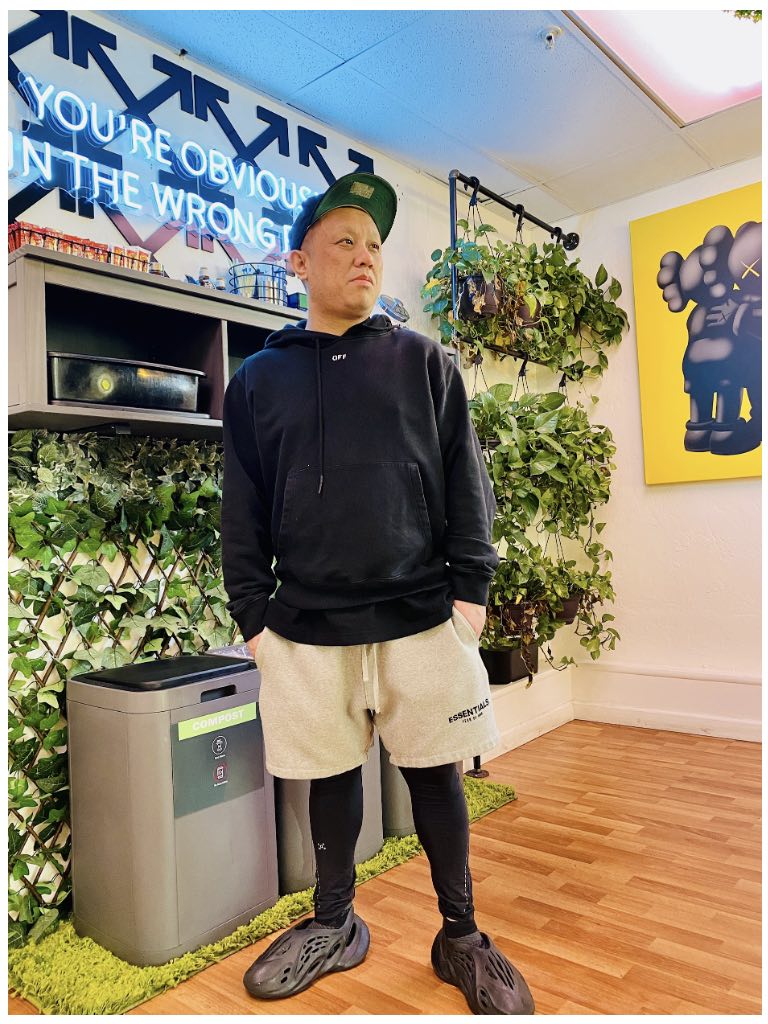
Entrepreneur Gilbert Liang feels the phrase ‘ghost kitchens,’ as cloud kitchens are sometimes known, doesn’t do his business justice.
“I don’t really like the word ‘ghost kitchen,” he says. “We are actually here. I still want customers to come in to pick up their food, so we can see them.”
The new restaurant model – in which food is prepared in nondescript commercial kitchens, reaching customers via food-delivery apps – gained traction during the pandemic and are described as tech startups disrupting the restaurant industry.
Liang emigrated to the U.S. from China at age 10 and worked in management, traveling throughout Asia. He sought to transfer the experiences he saw locally, which precipitated the founding of SAGA Kitchen during the pandemic. Jumping at the chance to revive a shuttered Chinese restaurant, he was joined by three partners with the expectations that each would set up their own branded restaurant.
But when the partners left a few months in, Liang was left to execute on his ideas by himself. Alameda, where Liang grew up, settled and opened SAGA, is a “fairly conservative town,” stagnant in offering innovative business or technologies that had been adapted in other cities within the Bay Area.
Realizing that the convergence of the pandemic and food-delivery apps was changing the food industry in real-time, he focused on introducing innovative features and infrastructure that would position SAGA for long-term success. From this, the micro food hall concept was birthed with four distinct Asian restaurant brands: Koharu Japanese Café (Japanese bento), Yue Club (dim sum), Slurp Shop (ramen), and Sachi Sushi (sushi).
After his initial partners left, Liang took over the lease of an adjacent space, bolstering his physical footprint. “The additional area is where people can hang out and enjoy the food,” he says.
Down the line, SAGA Kitchen could accommodate two or more micro restaurants, with some operating on limited weekend hours or as pop-ups. The flexibility is an extension of the “code share of the kitchen space” dynamic, per Liang, a nod to how airline carriers partner up to offer expanded routes globally.
Perhaps most importantly, Liang introduced a number of tech innovations within SAGA, including QR code menu ordering, a proprietary app (in addition to the third-party delivery apps), and arguably the most controversial or unusual for customers not accustomed to it – robots instead of servers.
Liang is careful to point out that introducing robots to his micro food hall isn’t about replacing human jobs, but applying technology in a way that ensures human staff can focus on higher value tasks and are better off in general. “I promised my staff that I will pay them a reasonable wage,” Liang says, and a key differentiator for Saga Kitchen is that it doesn’t add a service charge that many traditional restaurants have begun charging patrons post-pandemic.
Saga Kitchen is decorated with items that speak to Liang’s influences, which are rooted in street fashion, hip-hop and skateboarding as much as Asian cultures. “I used to skateboard, so I’m a Supreme guy,” Liang says, adding that he sees Saga as a hub that “can bridge the gap between the East and the West. This is why we have a Japanese bento box concept here, and also have a ramen shop, and a sushi spot.”
With this focus on gastrodiplomacy, Liang wants to continue to execute on his vision to build community. He’s tapping in with social media influencers, wants to work with other entrepreneurs and wants the “workmanship” that went into creating the micro food hall concept to be fully embraced.
Learn more about SAGA Kitchen by visiting its website and follow on Instagram at https://www.instagram.com/sagakitcheninc.
Advertising disclosure: We may receive compensation for some of the links in our stories. Thank you for supporting LA Weekly and our advertisers.
